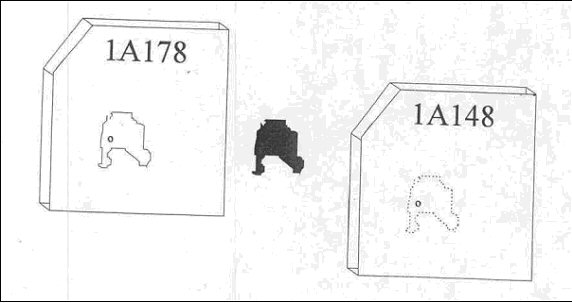LENR Archives Illuminate Scientific Mystery of Century – Part 3

Feb. 25, 2013 – By Steven B. Krivit –
[This is Part 3 of a Four-Part Series. Part 1 published on Feb. 20, Part 2 published on Feb. 22]
This is the continuation of a review of selected papers from the first decade of LENR research. This part continues with research from 1998.
This report briefly reviews the following papers:
David S. Silver and John Dash, “Surface Studies of Palladium After Interaction With Hydrogen Isotopes”
G. S. Qiao, X.L. Han, L.C. Kong, S.X. Zheng, H.F. Huang, Y.J. Yan, Q.L. Wu, Y. Deng, S.L. Lei, and Xing Zhong Li, “Nuclear Products in a Gas-Loading D/Pd and H/Pd System”
K.P. Sinha and Peter Hagelstein, “Electron Screening in Metal Deuterides”
Of significance to the more recent work performed at the Space and Naval Warfare Systems Center in San Diego, are fascinating results from a Chinese experiment that also used solid-state nuclear track detectors to detect charged particles.
The papers also reveal several contradictions between experimental data and statements made by Peter Hagelstein.
[DAP errMsgTemplate=”” isLoggedIn=”N”]
_____ Article continues for subscribers. Click here to subscribe. _____
[/DAP] [DAP errMsgTemplate=”” isLoggedIn=”Y”]
____________Subscriber-only content below ____________
ICCF-7 Papers
David S. Silver and John Dash, “Surface Studies of Palladium After Interaction With Hydrogen Isotopes”
David Silver, a graduate student at Portland State University, and his advisor, professor John Dash, reported unusual LENR phenomena in this paper. They observed that morphological changes took place during a six-month period after the experiments took place, and after another year and a half, even more changes took place. Perhaps these phenomena are not so unusual in LENRs, but the fact that they looked for them is unusual.
“Atomic force microscopy (AFM) studies performed six months after electrolysis of the heavy-water cathodes revealed asperities, craters, and nodules, suggesting that localized melting and recrystallization had occurred, as we reported previously on specimens electrolyzed for longer times. AFM studies 1.5 years later revealed loose, nanometer-sized particles, indicating that the heavy-water cathodes continued to change during storage, long after electrolysis was performed, which we also reported previously on other cathodes,” Silver wrote.
I know of one other researcher who has seen changes to material long after the experiment concluded. That work was reported by Mahadeva Srinivasan and his colleagues at the Bhabha Atomic Research Centre in 1989.
G. S. Qiao, X.L. Han, L.C. Kong, S.X. Zheng, H.F. Huang, Y.J. Yan, Q.L. Wu, Y. Deng, S.L. Lei, and Xing Zhong Li, “Nuclear Products in a Gas-Loading D/Pd and H/Pd System”
This group from the Physics Department at Tsinghua University, China, performed gas-loading LENR experiments using both hydrogen and deuterium. The paper is particularly well-written and clear. The authors were not limited by preconceived notions of the popular “cold fusion” idea and therefore did not search only for helium-4, which they found. They also found anomalous zinc and terbium, as well as evidence of charged particles.
A few years ago, New Energy Times published several articles by the Space and Naval Warfare Systems Center in San Diego on the use of solid-state nuclear track detectors to detect charged particles. The group at Tsinghua University used a different protocol in its search for charged particles; it used a gas experiment rather than an electrolytic experiment. It also searched for results from hydrogen as well as deuterium; the group used a different mechanical configuration, and it ran experiments for much longer durations.
“The solid state nuclear track detector (CR-39) was used to detect energetic charged particles from the surface of palladium thin film. Fig. 6 shows that a piece of hydrogen-loaded palladium thin film was sandwiched between two pieces of CR-39 detector. Five and a half months later, the CR-39 … pits were clearly shown. There is a big difference between the area covered by hydrogen-loaded palladium film and the area not covered by hydrogen-loaded palladium film. The number density of the pits is 30 times greater than that of background,” the authors wrote.
They also reported on a fascinating result from their unique CR-39 sandwich configuration.
“An interesting signal was found in a pair of CR-39 numbered 1A178 and 1A148. The signals appeared in the same position with a similar pattern. It reveals that there might be an active region on the palladium thin film, which emitted energetic charged particles in both directions. Since the thickness of the thin film is about 1 micron, it gives an estimation of the energy of the charged particle also, which must be in the order of MeV,” the authors wrote.

In the center, palladium thin film is shown adjacent to the two CR-39 detectors that had surrounded it.
Even though one of the authors was Xing Zhong Li, a strong advocate of his own “cold fusion” theory, the paper shows that the group of authors saw the bigger picture of LENR.
“Zinc components appeared in the Pd electrode in the early literature on cold fusion research, also. It was considered contamination. Indeed, this was important evidence for nuclear signals. However, it means that ‘cold fusion’ is just a part of this new category of anomalous phenomena in D/Pd, H/Pd or Hydrogen/Metal system. ‘Cold fission’ might be another part of this anomalous phenomenon. The three-body (3D) nuclear reaction (Takahashi) is also a part of this anomalous phenomenon. However, they might be all predicted by the selective resonant tunneling model (Li),” the authors wrote.
These results from Tsinghua University came a decade before the CR-39 results from SPAWAR. They add strong confirmation to the other evidence for energetic charged particles in LENRs. However, they also disconfirm Peter Hagelstein’s 2010 theoretical speculation that LENRs do not produce energetic charged particles. The D+D –> 4He + 24MeV heat hypothesis does not allow for energetic charged particles.
SPAWAR reported results showing MeV-level energetic charged particles in the 2007-09 timeframe. Regardless, Hagelstein soon conjectured that alpha particles in LENRs must have an upper limit of 20.2 keV. In this 2010 paper, Hagelstein not only contradicted the experimental data but also contradicted himself. Read what he wrote in 2000, in his ICCF-8 paper, in the next summary.
K.P. Sinha and Peter Hagelstein, “Electron Screening in Metal Deuterides” (ICCF-8)
In 1996, Hagelstein clearly knew the empirical anomalies in the field.
“Experimental evidence in support of anomalies in metal deuterides has accumulated during the past decade. These anomalies include neutron emission, fast (MeV) charged particle emission, excess-power generation and correlated helium-4 production, tritium production and induced radioactivity,” he wrote.
After 2000, Hagelstein seemed to forget the other anomalies. In 2008, he even went out of his way to tell the public that there were no neutrons in LENRs. There’s no coincidence that, in 2006, Widom and Larsen published their groundbreaking paper featuring their ultra-low-momentum neutron-catalyzed theory of LENRs. Later that year, Widom and Larsen were the only LENR theorists invited to speak at a two-day Defense Threat Reduction Agency conference. Their colleague Yogendra Srivastava is the only LENR theorist who has ever been invited to speak favorably about LENRs at CERN.
Part Four of this series will publish in a few days.
Questions? Comments? Submit a Letter to the Editor.

